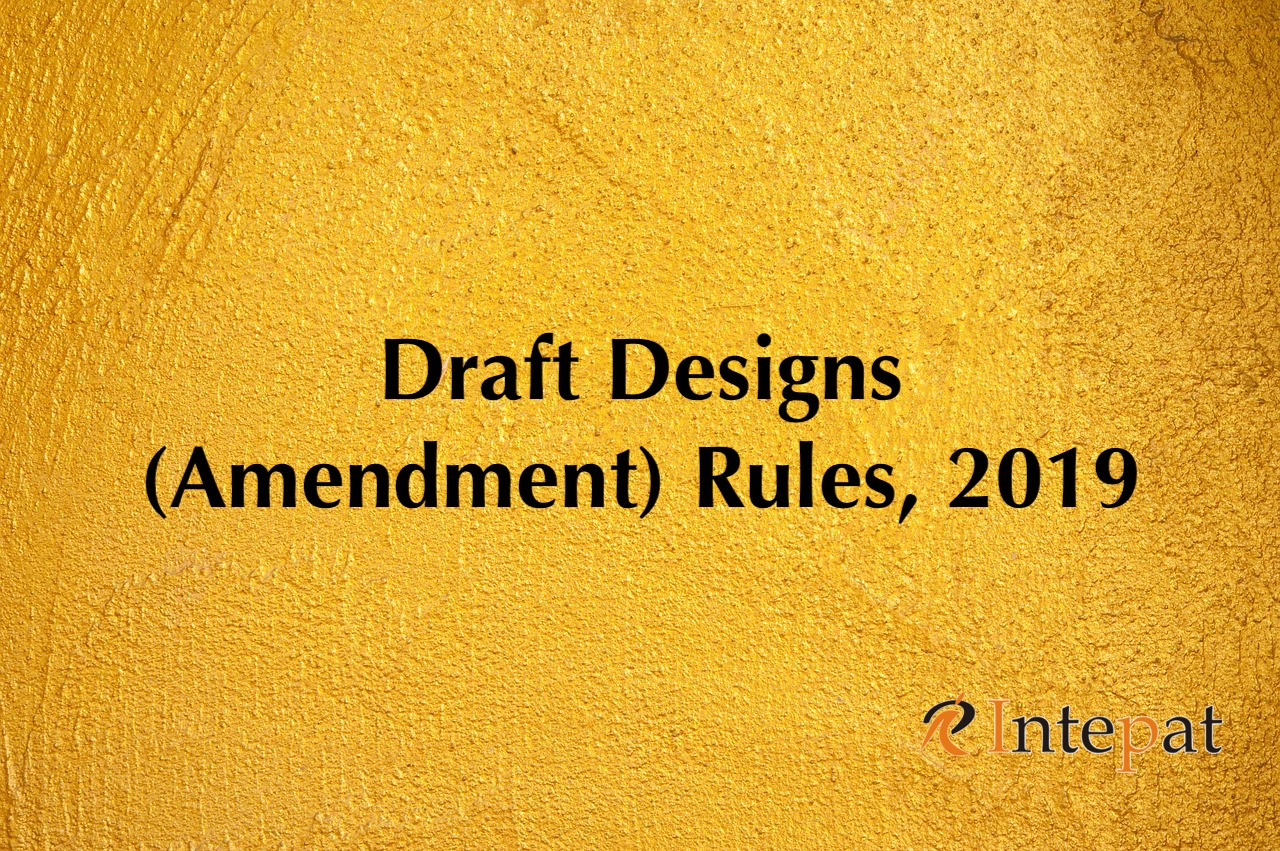The designs act 2000 was enacted to protect and safeguard the original industrial designs applied to particular articles manufactured by industrial processes or means. A design is defined in Section 2(d) of the Designs Act, 2000.
The Central Government, in the exercise of the powers conferred by section 47 of the Design Act, 2000, laid down The Designs Rules, 2001. Amendments to these rules were enacted in 2008, 2013, and 2014 and the latest draft amendments to the Designs Rules, 2001, in 2019. The Government of India circulated on October 18, 2019, to seek objections or suggestions.
The Designs (Amendment) Rules, 2019, provides eight amendments to the Design Rules 2001.
The First Amendment adds the definition of Startup under the ambit of these rules to be added to The Designs Rules, 2001 as Rule 2 (eb)[1].
The importance of protecting the Intellectual Property Rights of Startups came about with the ‘Scheme for Facilitating Start-Ups Intellectual Property Protection’ on January 13, 2016 (as amended from time to time) and is in force up to March 31, 2020 (SIPP). The scheme of SIPP aims to promote awareness and adoption of Intellectual Property Rights amongst startups and assist them in protecting and commercializing it by providing access to high-quality Intellectual Property services and resources. The Applicants under this scheme may be any startup recognized in the notification GSR 180(E) published in Part II, Section 3, Sub-Section (i) of the Gazette of India dated 17.2.2016.
The Second Amendment encompasses the addition of ‘startup’ under The Designs (Amendment) Rules, 2019 and the addition of ‘small entity’ [2], which was introduced in The Designs (Amendment) Rules, 2014 in a comprehensive provision as sub-clause (e) under Rule 5[3] of The Designs Rules. The rule in the 2019 amendment also provides for the omission of Rule 5(f)[4], which brings ‘small entity’ under the ambit of the provisions dealing with fees under the 2014 amendment.[5]
The Third Amendment substitutes Rule 10 of The Designs Rules, 2001, which dealt with the classification of goods as provided in the Third Schedule[6]. The amendment provides that.
“For the registration of designs and these rules, articles shall be classified as per the current edition of “International Classification for Industrial Designs (Locarno Classification)” published by World Intellectual Property Organization (WIPO).” [7]
The proposed amendment follows the current edition (12th Edition) of the Locarno Classification published by WIPO (The World Intellectual Property Organization). The change is proposed to harmonize the Indian design classification systems with the internationally accepted classification. The most significant aspect of this is the introduction of Class 32 of the Locarno Classification in Indian design laws. Class 32 of Locarno Classification includes Graphic symbols and logos, surface patterns, and ornamentation. However, the Indian Design law requires clarity concerning the registrability of graphic symbols and logos in cases other than those corresponding to applications with Graphical User Interface (GUI), which are designs displayed on computers or mobile devices as icons.
The Fourth Amendment substitutes the First schedule dealing with fee payment for the different applications, requests, and petitions according to the Design Rules along with its corresponding form with an amended schedule enabling differentiation for the fees applicable to natural persons and persons other than natural persons, including the newly added definition of and ‘startup’ and ‘small entity’ as introduced with the 2014 Amendment.[8]
The Fifth Amendment in sub-section (i) amends Form 1, which is the application for design registration and the inclusion of ‘startup’ and ‘small entity’ in the category of applicants. Form 24 is also amended with the inclusion of ‘startups’ and ‘small entity’ in submitting the claim of status for the same.[9] Form 24 was first introduced in the 2014 Amendment for the claim of the status of a small entity alone.[10]
The Sixth Amendment enacts the omission of the Third Schedule that previously laid down the comprehensive classification of Goods. The current classification followed is the Locarno Classification published by WIPO, which is brought about with Rule 4 of the 2019 amendment.[11]
The Seventh Amendment substitutes the Fourth schedule, which pertains to the scale of costs allowable in proceedings before the Controller. With this amendment, there is differentiation for the fees applicable to natural persons and persons other than natural persons, including the newly added definition of ‘startup’ and ‘small entity’ as introduced with the 2014 Amendment.[12]
[1] Rule 2 of The Designs (Amendment) Rules, 2019 : (eb) “startup” means-
1. an entity in India recognized as a startup by the competent authority under the Startup India initiative; and
2. in the case of a foreign entity, an entity fulfilling the criteria for turnover and period of incorporation/ registration as per Startup India Initiative and submitting a declaration to that effect
[2] Rule 2(i) of The Designs (Amendment) Rules, 2014
[3] (e) In case an application processed by a natural person and/ or Startup and/ or small entity is fully or
partly transferred to a person other than a natural person, Startup, or small entity, the difference, if any,
The scale of fees between the fees charged from the natural person, Startup, or small entity and the fees chargeable from the person other than a natural person, Startup, or small entity in the same matter shall be paid by the new applicant with the transfer request.
[4] Rule 5(f) of The Designs Rules [ as enacted in Rule 3 of The Designs (Amendment) Rules, 2014]
[5] Rule 3 of The Designs (Amendment) Rules, 2019
[6] The Third Schedule is now omitted by The Designs (Amendment) Rules, 2019
[7] Rule 4 of The Designs (Amendment) Rules, 2019
[8] Rule 5 of The Designs (Amendment) Rules, 2019
[9] Rule 6 of The Designs (Amendment) Rules, 2019
[10] Rule 6(xi) of The Designs (Amendment) Rules, 2014
[11] Rule 7 The Designs (Amendment) Rules, 2019
[12] Rule 8 of The Designs (Amendment) Rules, 2019




